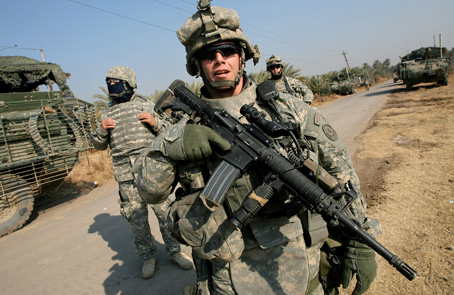Iraq War update: Partial withdrawal on track, despite rising violence and lack of a new government

By September 1, President Obama pledges to have only 50,000 "non-combat" troops stationed in Iraq to assist with security oversight. Currently, about 65,000 U.S. troops remain. Some are worried, however, that the nation may devolve into another round of civil war once the partial withdrawal benchmark is achieved.
After a significant drop in violence in 2008 and most of 2009, sectarian strife has begun to markedly increase over the last six to eight months. According to the Iraqi government, July was the bloodiest month of sectarian violence in over two years, though the statistic is disputed by the U.S. military.
In addition, nearly five months after parliamentary elections, Iraqis have been unable to form a new government, joblessness remains high, and intermittent electrical grid failures are becoming commonplace. Al-Qaeda has resumed its execution of powerful, widespread bombings and pro-Iranian cleric, Moqtada al-Sadr is once again emerging as a major power broker in the nation's political vacuum.
By the end of 2011, President Obama still intends on removing all remaining US troops.
Since the 2003 invasion, the United States has spent over $735 billion, lost over 4,400 soldiers, and had approximately 35,000 soldiers maimed for life. PTSD and suicide rates in the military have also dramatically increased.



